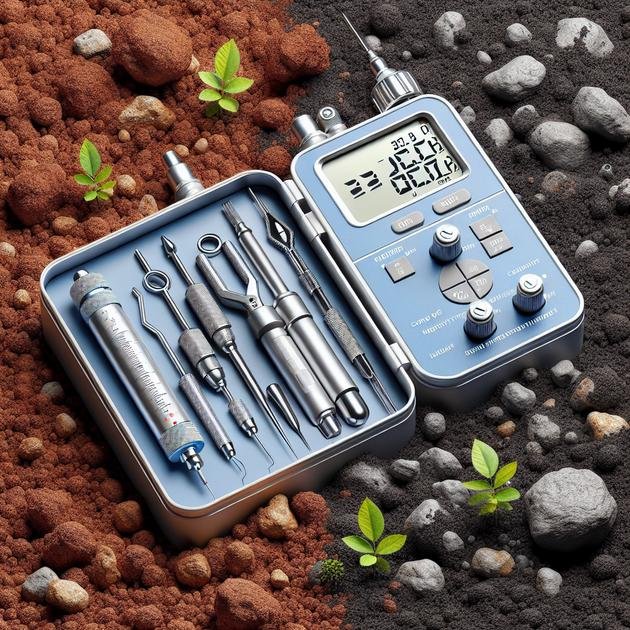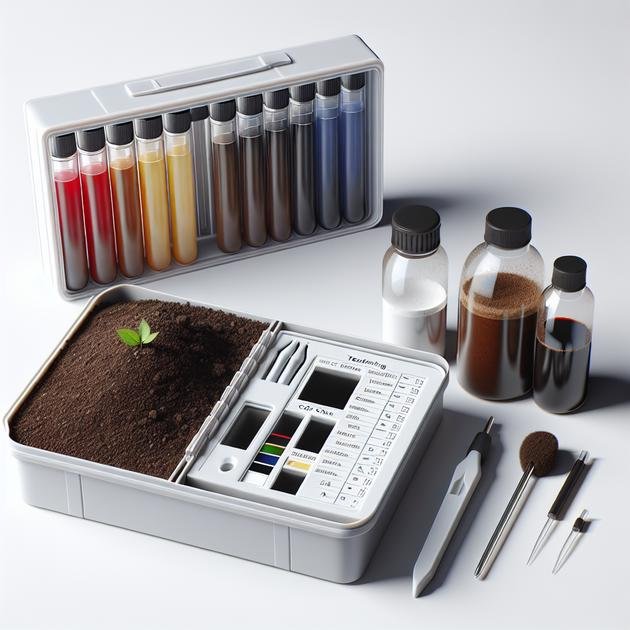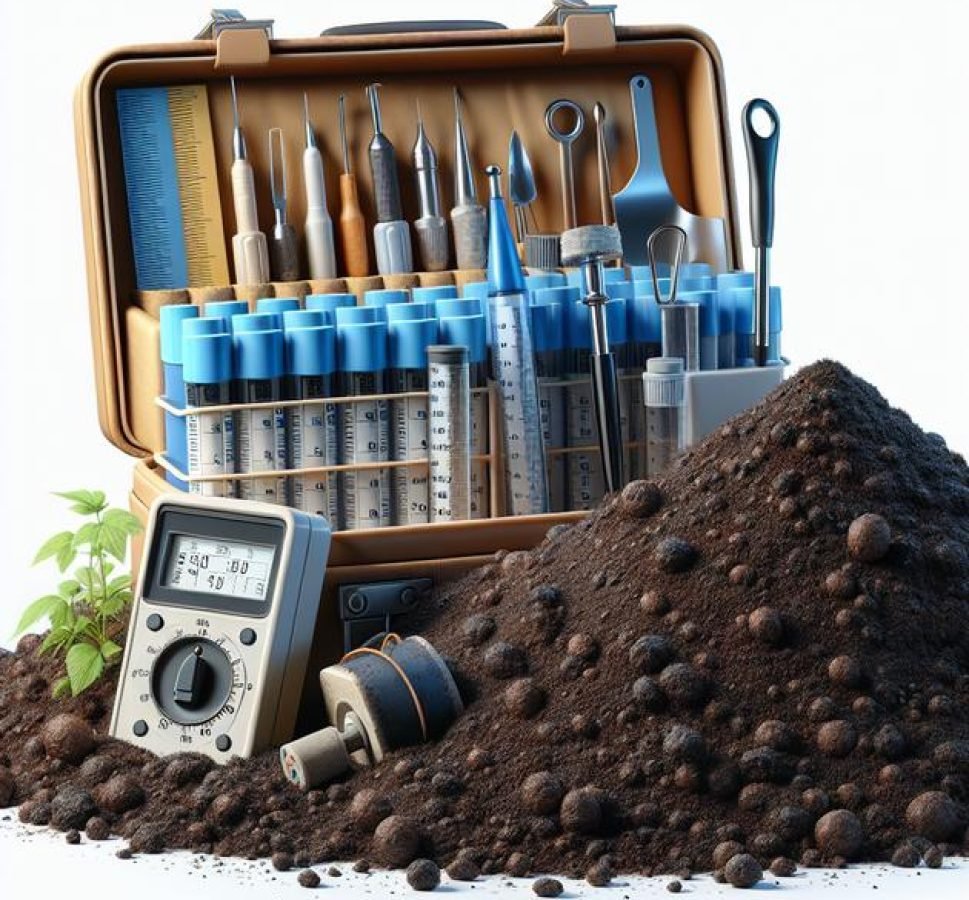Garden soil testing determines soil pH, nutrient levels, and texture, guiding gardeners to amend soil accurately for healthier plant growth and improved fertility.
Understanding garden soil testing can transform your green space. Ever wondered what makes some gardens thrive while others struggle? Let’s explore how checking your soil can make all the difference.
why garden soil testing matters
Testing your garden soil is a crucial step to ensure your plants get the right nutrients and grow healthy. Soil testing helps identify important factors like pH level, nutrient deficiencies, and soil texture. Without this information, you might be guessing what your soil needs, which can lead to poor plant growth or wasted resources.
Understanding soil health
Healthy soil supports plant roots, retains moisture, and provides essential nutrients. Testing reveals the soil’s current condition and highlights any imbalances that could affect plant development.
Preventing common problems
Soil tests can detect issues such as too much acidity or alkalinity, which affects nutrient availability. Knowing these problems early lets you correct them before they harm your garden.
Saving time and money
Instead of randomly adding fertilizers or amendments, soil testing guides precise adjustments. This avoids overuse of chemicals and promotes a sustainable, cost-effective gardening approach.
Overall, garden soil testing provides essential knowledge that empowers you to make informed decisions and cultivate a thriving garden.
tools and methods to test your garden soil
There are several tools and methods available to test your garden soil at home or through professional labs. Choosing the right approach depends on your goals, budget, and how detailed you want the results.
Home soil test kits
These kits are easy to use and provide quick results on pH levels and basic nutrient content. Typically, you collect a soil sample, mix it with a solution, and observe color changes that indicate soil properties. While convenient, home kits may have limited accuracy compared to lab tests.
Professional soil testing
Sending soil samples to a lab offers a comprehensive analysis including macro and micronutrient levels, organic matter content, and soil texture. Labs provide detailed reports with recommendations tailored to your soil’s needs.
Using a soil probe or auger
A soil probe or auger helps collect consistent samples from different depths, which is important for understanding nutrient distribution. Sampling from multiple spots in your garden improves result accuracy.
Electronic soil testers
Devices like digital pH meters and moisture sensors give immediate readings and can be reused multiple times. They are handy for ongoing monitoring of soil conditions throughout the growing season.
Whichever method you choose, the key is to collect clean, representative samples and follow instructions carefully to get reliable insights for your garden soil.
interpreting soil test results

After receiving your soil test results, understanding the data is key to making the right changes in your garden. The report typically includes information on soil pH, nutrient levels, and organic matter.
Soil pH interpretation
The pH scale ranges from 0 to 14, with 7 being neutral. Most garden plants prefer a pH between 6.0 and 7.5. If your soil is too acidic (below 6.0), some nutrients become less available. If it’s too alkaline (above 7.5), other nutrients may be locked out.
Understanding nutrient levels
Common nutrients tested include nitrogen (N), phosphorus (P), and potassium (K). The results usually classify nutrient amounts as low, medium, or high. Low levels mean you need to add fertilizers or amendments; high levels suggest less or no supplement is needed.
Organic matter and texture
Organic matter improves soil structure and moisture retention. If your results show low organic matter, consider adding compost. The test may also describe soil texture (sand, silt, clay), which affects drainage and nutrient holding capacity.
Using these details together helps you create a customized plan to balance your garden soil for healthier plants and better growth.
common soil problems and solutions
Garden soil can face various problems that affect plant growth. Identifying these issues early allows you to take the right actions to fix them.
Soil compaction
Compacted soil is dense and limits root growth and water penetration. It often results from heavy foot traffic or machinery use. To fix this, aerate your soil by using a garden fork or aeration tool to create holes that improve air and water flow.
Nutrient deficiencies
When soil lacks essential nutrients like nitrogen, phosphorus, or potassium, plants can show yellowing leaves or stunted growth. A soil test helps identify which nutrients are missing. Adding organic fertilizers or compost replenishes these nutrients effectively.
Incorrect pH levels
Soil that is too acidic or alkaline can lock out nutrients. Lime can be added to raise pH if the soil is acidic, and sulfur can lower pH if it’s too alkaline. Make sure to adjust slowly and retest after a few months.
Poor drainage
Waterlogged soil deprives roots of oxygen and can cause root rot. Improve drainage by mixing in organic matter like compost or installing raised beds. Avoid overwatering and choose plants suited for your soil type.
Recognizing and addressing these common soil problems keeps your garden thriving and supports healthy plants.
how to balance soil pH naturally
Balancing soil pH naturally involves using organic materials and simple techniques to create the right environment for your plants. Soil pH affects how nutrients are absorbed, so keeping it in the ideal range is important.
Raising acidic soil pH
If your soil is too acidic, adding lime is a natural way to increase the pH level. Ground limestone or wood ash can neutralize acidity over time. Be sure to apply these amendments evenly and test the soil after a few weeks.
Lowering alkaline soil pH
To reduce soil alkalinity, use elemental sulfur or organic materials like pine needles, peat moss, or composted leaves. These items slowly acidify the soil and improve its structure.
Using organic matter
Adding compost or well-rotted manure helps buffer soil pH by improving nutrient availability and microbial activity. Organic matter also enhances moisture retention and soil texture.
Regular testing and adjustments
Because natural amendments take time, it’s important to test your soil every few months and adjust as needed. This steady approach keeps your garden soil balanced without harsh chemicals.
boosting soil fertility with organic matter

Adding organic matter to your garden soil is one of the best ways to improve its fertility. Organic matter includes compost, manure, leaf mold, and other natural materials that enrich the soil.
Benefits of organic matter
Organic matter improves soil structure by making clay soils lighter and sandy soils better at retaining moisture. It also feeds beneficial microbes that help break down nutrients into a form plants can absorb.
Types of organic matter to use
Compost is a rich source of nutrients and humus. Well-rotted manure provides nitrogen and other minerals. Leaf mold adds valuable organic compounds and improves soil texture.
How to apply organic matter
Spread a 2-3 inch layer of organic matter over your garden beds and mix it into the top 6-8 inches of soil. This helps the nutrients reach plant roots and enhances overall soil health.
Timing and frequency
Adding organic matter in early spring or fall gives it time to break down and improve the soil before planting seasons. Regular additions keep your soil fertile and productive year after year.
when and how to retest your soil
Knowing when and how to retest your soil is essential to maintain a healthy garden. Soil conditions change over time due to plant growth, weather, and amendments, so regular testing keeps your soil balanced.
When to retest your soil
It’s best to retest soil every 2 to 3 years for general maintenance. However, if you add large amounts of fertilizers, lime, or organic matter, retesting after 6 to 12 months can help track changes and adjust your care plan.
Season and timing
Test your soil in early spring or late fall when soil is dry and not frozen. This timing gives you results before planting or after the growing season.
Sampling for retesting
Use a clean tool to take multiple samples from different parts of your garden, mixing them to get a representative sample. Avoid areas where fertilizers or compost were recently applied to prevent skewed results.
Maintaining records
Keep a log of soil test results and the amendments you apply. This helps spot trends and make better decisions for your garden soil over time.
tips for maintaining healthy garden soil
Maintaining healthy garden soil is key to growing strong, vibrant plants. Simple habits can help keep your soil fertile and balanced over time.
Rotate your crops
Plant different types of plants in different areas each year to prevent nutrient depletion and reduce pest buildup. Crop rotation improves soil health naturally.
Keep soil covered
Use mulch or cover crops to protect soil from erosion, retain moisture, and suppress weeds. Covering soil also promotes beneficial microbial activity.
Avoid over-tilling
Excessive tilling breaks down soil structure and can harm organisms living in the soil. Lightly turn soil only when necessary to maintain its integrity.
Water properly
Water deeply but less frequently to encourage roots to grow deeper. Avoid waterlogging, which can damage soil and plant roots.
Add organic matter regularly
Incorporate compost, mulch, or aged manure to replenish nutrients and improve soil texture. Organic matter supports a healthy soil ecosystem.
Following these tips for maintaining healthy garden soil helps create a thriving environment for your plants year after year.
Bringing it all together
Testing and improving your garden soil is key to growing healthy plants and a thriving garden. By understanding your soil’s condition and making informed adjustments, you can help your plants access the nutrients they need.
Simple steps like regular soil testing, balancing soil pH, adding organic matter, and following good gardening practices ensure long-term soil health. Paying attention to your soil’s needs saves time, money, and effort while boosting plant growth.
With these tips, anyone can create a vibrant and productive garden that flourishes season after season.





